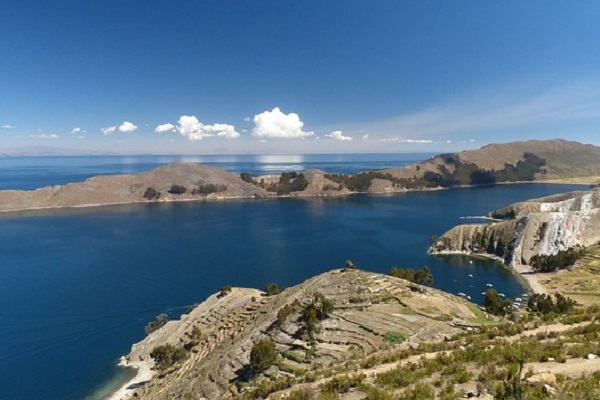
The religion of the Tiwanaku pre-dates the Inca by 500 years.
A paper published in the April edition of the Proceedings of the National Academy of Sciences journal described how gold objects, incense burners, metal ornaments, and semiprecious stones recovered from a reef located in Lake Titicaca represented a once thriving religion that propelled the Tiwanaku state to attain dominance between the 5th and 12th centuries CE. The list of artifacts found at Khoa reef, the discovery site, included two medallions made of gold and metal plaques. The gold medallions presumably represent the ray-faced deity of the Tiwanaku, and the plaques convey a puma-llama hybrid. Divers sent below the surface of the lake to the Lake Titicaca floor discovered remains of sacrificed llamas.
Evidence of Religion That Sacrificed Llamas Discovered in Lake Titicaca[/tweetthis]
The Tiwanaku empire’s domain stretched from Columbia to Chile. Unfortunately, not many traces of civilization exist, but it is known they gathered influence via trade and religion. Although archaeologists have discovered ample evidence of religious beliefs held by the Tiwanaku, they are still to connect the dots when it comes to deciphering the belief system and how this religion contributed to the geographical expansion of Tiwanaku governance.
Archaeologists were surprised to discover items crafted from shells of the Spondylus mollusk. These mollusks were an essential component of Andean culture but from the Pacific Ocean. Lake Titicaca is not their natural habitat. The fact of the Spondylus crafted artifacts being found high up in the mountains, and over 1,200 miles from the ocean indicates the trade reach of the Tiwanaku people. It is evident these shells were held in high esteem and commanded significant monetary value during those times.
Here’s a bit of religion and animality for your Wednesday: Llama sacrifice site found in Lake Titicaca https://t.co/83wYIjsADN via @CNNTravel
— Jacob J. Erickson (@jacobjerickson) April 3, 2019
According to Jose M. Capriles, an anthropologist and assistant anthropology professor at Penn State and co-author of the paper, the Tiwanaku people left behind so much Spondylus relics in the high Andean lake that it helped the first nascent Tiwanaku state to grow more powerful. The sacrifices signified a growing religious tradition. The worshipers during the Tiwanaku era exhibited their commitment to new religious traditions, which later became accepted customs and played a huge role in building societies. Capriles said that the deities created by the people became the “institutions that govern behavior.”
